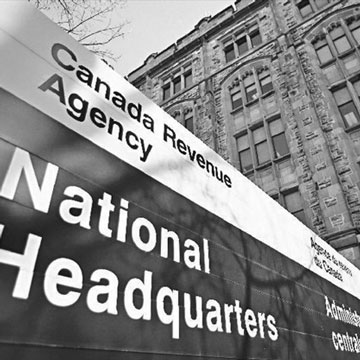ACCOUNTING & BOOKKEEPING FOR Non Profit Organizations (NPO) IN CANADA
How to Organize Bookkeeping & Accounting for Not For Profit Organizations
Introduction
 The not-for-profit sector in Canada encompasses tens of thousands of organizations. The vast majority of enterprises engaged in religious, educational, health care, social services and charitable activities operate without a profit motive even though some of these organizations collect and expend hundreds of millions of dollars a year. On a smaller scale, the local community club, the local church bingo, the men’s evening hockey league and a host of similar organizations we all encounter on a daily basis are also part of this sector.
The not-for-profit sector in Canada encompasses tens of thousands of organizations. The vast majority of enterprises engaged in religious, educational, health care, social services and charitable activities operate without a profit motive even though some of these organizations collect and expend hundreds of millions of dollars a year. On a smaller scale, the local community club, the local church bingo, the men’s evening hockey league and a host of similar organizations we all encounter on a daily basis are also part of this sector.
Let’s review the unique bookkeeping requirements that relate to not for profits.
Fund Accounting
The major distinguishing feature of the not-for-profit sector is that fund accounting is often used. Fund accounting attempts to segregate the fund-raising and expenditure activities of the organization into separate ‘pots’, so that the organization can track and report its operations and the net assets on hand by the nature of the activities it undertakes. Each fund comprises a set of self-balancing accounts (that is, debits equal credits within each fund).
Fund accounting helps the organization to report meaningful information where a not-for-profit organization is restricted in what it can do with either contributions or net assets or both.
Restrictions on contributions may be imposed by donors or other providers of resources. Restrictions may similarly be imposed by those who provide funds, or by government regulation or by policy decisions made by those who run the organization – typically the Board of Directors.
EXAMPLE – RESTRICTIONS
A church has established a registered charity which runs a hospice. The provincial government provides funding on the condition that the funding is used only to provide shelter for individuals referred by the local social services agency. The municipality has a by-law that requires the charity to maintain a capital reserve fund to be used for building repairs. The provincial government has imposed an external restriction on the use of its contributions and the charity should account separately for the contributions received and the related activities. The by-law creates a legal restriction which also imposes a separate accounting requirement on the charity.
Most not-for-profit organizations that face restrictions use fund accounting to keep track of their performance against these restrictions and for purposes of preparing financial reports for their stakeholders.
EXAMPLE – FUND REPORTING
The Canadian Red Cross Society publishes its financial statements annually. The following is an extract from a set of those statements. This extract is intended only to show the nature of funds that an organization may establish and is not intended to be generally representative.  The Society has three funds. One accounts for its investment in capital assets; one accounts for funds which the donors have restricted for use in creating an endowment; the third has been internally restricted by the Board of Directors. The “Unrestricted” column reports net assets that are not part of any of the funds.
The Society has three funds. One accounts for its investment in capital assets; one accounts for funds which the donors have restricted for use in creating an endowment; the third has been internally restricted by the Board of Directors. The “Unrestricted” column reports net assets that are not part of any of the funds.
Setting Up the Accounts
 Most not-for-profit entities do not carry on a business and receive their revenue in the form of contributions from governments, private agencies and individuals. Charitable organizations may carry on fund-raising activities which are often akin to businesses, but because they are carried on without a profit intent it is usually not necessary to create the level of detail in the accounts for such activities that a commercial enterprise would require.
Most not-for-profit entities do not carry on a business and receive their revenue in the form of contributions from governments, private agencies and individuals. Charitable organizations may carry on fund-raising activities which are often akin to businesses, but because they are carried on without a profit intent it is usually not necessary to create the level of detail in the accounts for such activities that a commercial enterprise would require.
On the revenue side, separate accounts are required for the various ways in which contributions might be received and which the organization might want to track. For example, a large charity might have accounts for federal funding, provincial funding, municipal funding, private funding, fund raising, general donations and investment income.
On the expenditure side the major bookkeeping issue is the level of detail in expenditures that the organization might want to track. For many not-for-profit organizations, payroll costs are by far the largest expenditure. Reporting salaries and wages as one number might not be informative to the users of the statements; they would prefer to see the expenditure allocated to the various activities the organization engages in.
As discussed in greater detail below, the restricted fund method of accounting forces the organization that uses it to account separately for revenues, expenditures and fund balances that relate to specific activities. Where this method is used, the organization will need separate revenue, expenditure, asset and net asset (equity) accounts for each restricted fund as well as similar accounts for all unrestricted funds collectively.
Of course, there are not-for-profit organizations which carry on activities which are, for all intents and purposes, businesses; think of your local public theatre company or dance troupe. These organizations need the same level of detail in their accounts as does any commercial enterprise.
Accounting for Contributions
There are two methods of bookkeeping contributions – the deferral method and the restricted fund method. A not-for-profit organization can choose whichever method it thinks best reflects its operations.
In applying these methods, the bookkeeper must understand the nature of the contribution that has been received.
Types of Contributions
There are certain terms that are used in the not-for-profit sector that the bookkeeper should understand when it comes to recording contributions.
Unrestricted
- An unrestricted contribution is one that comes with no strings attached; the organization can use the contribution as it likes.
Restricted
- A restricted contribution is one that the organization must use only for specified purposes. Where a contribution is made in the form of capital property – a donation of land, for example – the contribution is necessarily restricted.
- Most government contributions are restricted, as the funding agency will specify how the contributions are to be used.
- Very often governments enter into what appear to be fee-for-service arrangements with the not-for-profit sector where the government funding is tied to a specific level of activity. However, such amounts should be accounted for as contributions and not as general revenues.
Endowment
- An endowment contribution is a subcategory of restricted contributions; one that the donor has required be maintained permanently, effectively as part of the capital of the organization.
EXAMPLE – TYPES OF CONTRIBUTIONS
A local symphony orchestra receives three contributions. The first is $100,000 provided by a wealthy local businessman. He instructs the orchestra that the funds are to be retained for the purposes of creating a permanent endowment, the income from which can be used to defray operating costs. This is an endowment contribution. The second is from the provincial government. It provides $30,000 to be used to buy tickets to concerts which are to be given by the orchestra to students in schools in low-income districts. Although this contribution could be viewed as revenue from the sale of tickets, it should be recorded as a restricted contribution. Finally, a long-time subscriber sends along an extra $50 when she renews her season’s tickets. This is an unrestricted contribution.
Contributions in Kind
It is not unusual for not-for-profit organizations to receive in-kind contributions of goods and services. These should be valued at fair value, where this can be reasonably ascertained.
For income tax purposes a registered charity cannot issue a donation receipt for contributed services and many registered charities choose not to value contributed services in their financial statements. Indeed, most not-for-profit organizations do not attribute a value to contributed services because their value is hard to quantify.
A service provider may donate services by billing for them and forgiving the amount owing. A transaction of this sort is accounted for as a purchase of services followed by a contribution in the amount of the payable balance forgiven.
The Deferral Method
The deferral method is used when an organization chooses not to use the restricted fund method.
Under the deferral method, restricted contributions are deferred and not recognized in revenue until such time as the related expenditures are incurred.
EXAMPLE – DEFERRAL METHOD
A local symphony orchestra receives $30,000 from the provincial government to be used to buy tickets to concerts which are to be given by the orchestra to students in schools in low-income districts. Although the full contribution is received in the current fiscal year, only $22,000 in tickets were given out in the current year. This is recorded as follows:  The deferred amount would be taken into revenue when the amount was expended on tickets, presumably in the next fiscal year.
The deferred amount would be taken into revenue when the amount was expended on tickets, presumably in the next fiscal year.
Where the restricted contribution relates to the purchase of a capital asset the contribution is deferred and taken into income on the same basis that the asset itself is amortized. If the asset is not amortized, the restricted contribution is credited directly to surplus.
EXAMPLE – DEFERRAL METHOD & CAPITAL ASSETS
The symphony orchestra receives $18,000 as a grant from a private foundation to be used to defray part of the cost of a new computerized ticketing system. The system costs $120,000 in total, and is depreciated at 30% per year on a declining balance. Receipt of grant and purchase of equipment First year's depreciation
First year's depreciation
Under the deferral method, all unrestricted contributions are taken into revenue in the period in which they are received. Endowment contributions are recognized as a direct credit to net assets (surplus).
The Restricted Fund Method
Under the restricted fund method, a self-balancing set of accounts is established for each restricted fund the organization has, as well as a set of self-balancing accounts for unrestricted funds.
Restricted contributions (other than endowment funds) are reported as contribution revenue of the restricted fund to which they relate as they are received. Where unrestricted funds are used to supplement expenditures under a restricted fund program a transfer from unrestricted to restricted funds is first recorded.
Endowment funds are treated slightly differently, as the endowment fund records as revenue both restricted endowment contributions received and investment income that is earned on endowment funds. As with non-endowment restricted funds, unrestricted funds used to supplement the endowment fund expenditures are shown as a transfer.
EXAMPLE – RESTRICTED FUND METHOD
If the orchestra were using the restricted fund method, it would account for the ticket fund activities as follows: Receipt of grant and purchase of equipment *These are accounts in the restricted fund.
*These are accounts in the restricted fund.
No special adjustment is required where a restricted fund is used to account for capital assets. Restricted contributions relating to capital assets are shown as revenue of the fund as they are received; capital outlays are charged to the fund when the asset is purchased; depreciation expense is recorded in the normal manner, with the expense charged to the fund.
However, even where an organization uses the restricted fund method, it may receive restricted contributions for which it has no corresponding restricted fund. Where this is the case the restricted contributions should be accounted for using the deferral method.
GST
 A detailed review of how the GST works generally is provided in our GreenLearning article “Sales Taxes in Canada - What You Need to Know”.
A detailed review of how the GST works generally is provided in our GreenLearning article “Sales Taxes in Canada - What You Need to Know”.
The most complex rules on the application of the GST are those that relate to the not-for-profit sector. (In GST parlance, this sector is called the “MUSH” sector – municipalities, universities, schools and hospitals. It also includes registered charities and not-for-profit entities generally.)
The complexity arises because, by and large, the not-for-profit sector provides public goods and services and the intention is not to subject these to tax. Some not-for-profit entities, however, provide goods and services that are not dissimilar to those provided by the private sector. These should be subject to tax in the same way that private sector supplies are.
These conflicting policy objectives are reconciled in the following general framework:
- most goods and services provided by the not-for-profit sector are exempt. No GST is collected and no related GST paid is recoverable;
- where goods and services are not exempt but taxable the not-for-profit sector registers, collects tax and claims input tax credits in exactly the same manner as the for-profit sector;
- most publicly funded not-for-profit entities and all registered charities are allowed to claim a rebate for GST paid that is not recoverable by way of input tax credit.
Thus, the normal way to approach the application of the GST to a not-for-profit entity is:
- ascertain the type of organization – public sector body, public service body, registered charity, university, etc.;
- review the exempting provisions and determine whether the related activity is exempt. There is no easy way to do this; the detailed rules must be reviewed and understood;
- if the supply is taxable and the organization is a registrant, collect GST on revenue and claim back as an input tax credit the GST paid on goods and services that are consumed, used or resupplied in the taxable activity;
- accumulate the GST that is not recoverable as an input tax credit and claim the relevant rebate.
Charities
Special provisions apply to a registered charity which is not also a hospital, university, public college or school authority.
First, such ‘pure’ charities have their own exemption rules.
Second, these charities have a special method for calculating net tax – the amount of GST to remit. Certain charities can elect not to use this method but for most it is mandatory.
Tax Reporting
 Only registered charities are required to file a return for income tax purposes.
Only registered charities are required to file a return for income tax purposes.
Although charities are exempt from income tax (as are all other not-for-profit entities), they enjoy a privileged position because they are permitted to issue charitable donation receipts. For this reason, charities are held to a high standard and are required to file annual information returns. Furthermore, these returns are available to the public through the Canada Revenue Agency website so that any interested person can assess how the charity is using the money it is given.
A charity’s annual information return, form T3010B, is to be filed within six months of the end of its taxation year.
In addition to reporting its revenues and expenditures, a registered charity is required to report on the amount of its expenditures when measured against a number called the ‘disbursement quota’.
This number, which may be calculated on the value of donation receipts issued or on the value of the charity’s assets (depending on the nature of the charity), is the minimum amount the charity can expend in order to maintain its charitable status. The purpose of the quota is to ensure that registered charities do not simply accumulate capital and earn tax-free income but that they expend a substantial portion of what they bring in on charitable undertakings.
SUMMARY
Special issues arise when a not-for-profit organization accounts for contributions. The way in which the contribution is accounted for varies with the nature of the contribution.
- Many not-for-profit organizations use restricted fund accounting in reporting their operations.
- Those that do not should use the deferral method of accounting for contributions.
- Either method requires that the not-for-profit organization set up accounts that are not found in the chart of accounts of a commercial enterprise.
- Special and very complex rules apply when accounting for GST for the not-for-profit sector.
- A registered charity is required to file an annual information return and to expend a specified minimum amount each year on charitable activities.
 We can assist you with the ins and outs of accounting and bookkeeping for your Not for Profit Organization NPO in Canada. Here at Green Quarter Consulting - Accounting and Bookkeeping Services for Small Businesses in White Rock South Surrey, Vancouver, Langley and Surrey BC, we assist Small Business Owners with analyzing transactions, sources of income and your tax risks and how they relate to your business strategy. Learn more about our Greenstamp CFO Services here.
We can assist you with the ins and outs of accounting and bookkeeping for your Not for Profit Organization NPO in Canada. Here at Green Quarter Consulting - Accounting and Bookkeeping Services for Small Businesses in White Rock South Surrey, Vancouver, Langley and Surrey BC, we assist Small Business Owners with analyzing transactions, sources of income and your tax risks and how they relate to your business strategy. Learn more about our Greenstamp CFO Services here.
Contact us today at 778-791-2864 or 604-970-0658, let’s talk, or send us an email here and we will be in touch very shortly.
GET YOUR FREE CONSULTATION TODAY

